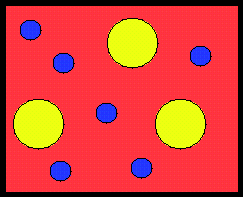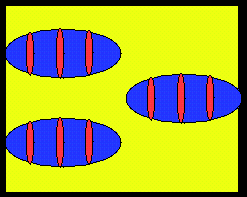 A example of ``T-structure''
A example of ``T-structure''Dealing with multiphase composites and polycrystals one needs to consider a much greater variety of topologically different microstructures. Some results are discussed here, but the whole picture is not clear yet. The multicomponent optimal structures often have fractal geometries. The same geometric construction is repeated again and again as in an Escher picture
The difference between two-phase and multi-phase optimal structures is as huge as the difference between the black-and-white and the color TV. For detailed discussing, we refer to Variational methods for Structural Optimization Chapter 12.
Here, we restrict ourselves with two remarks that show the complexity of the problem.
1. The laminate is a structure in which the fields are constant in each material. A laminate is the only type of a two-component structure with these properties. For multi-component structures, the constancy of the fields corresponds to large class of ``T-structures''
 A example of ``T-structure''
A example of ``T-structure''
 Large volume fraction of the best material, the swiss
cheese topology (Milton, 1986)
Large volume fraction of the best material, the swiss
cheese topology (Milton, 1986) |
 Small volume fraction of the best material; this material
localizes inside the inclusion to compensate the properties
of the worst material (Cherkaev, 1998)
Small volume fraction of the best material; this material
localizes inside the inclusion to compensate the properties
of the worst material (Cherkaev, 1998)
|